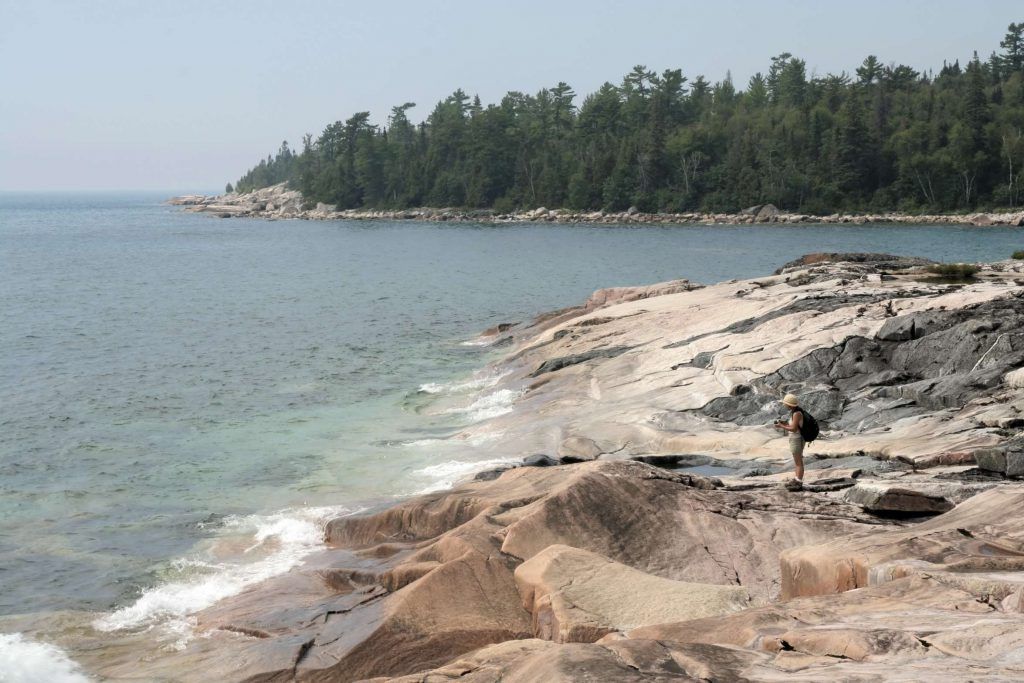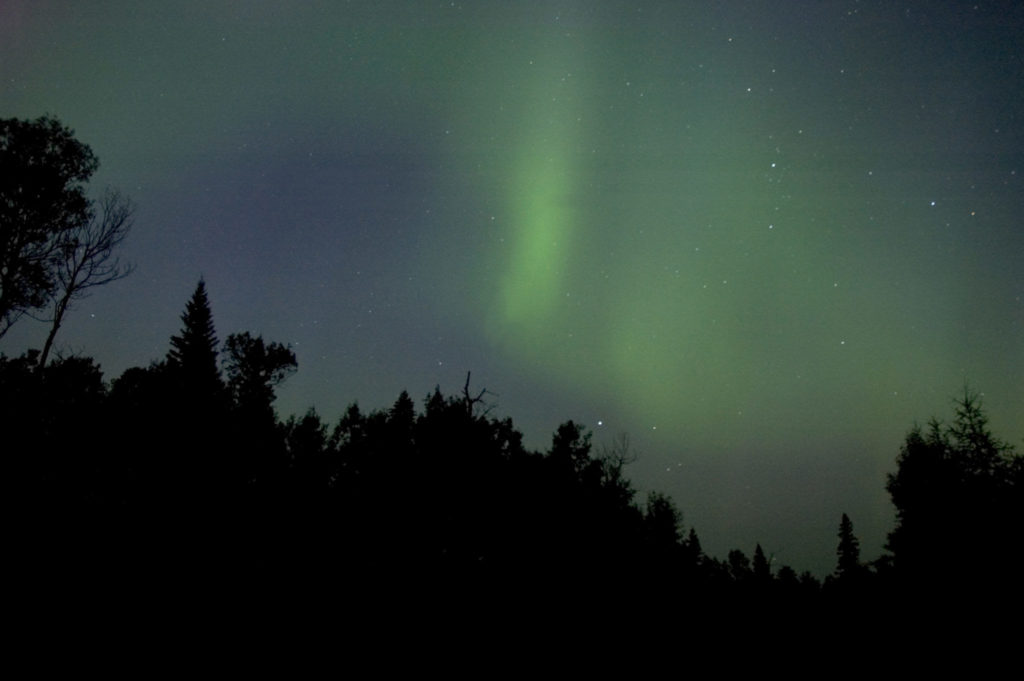Ontario Nature Blog
Receive email alerts about breaking conservation
and environmental news.
© Lora Denis
Silent Lake Provincial Park © John Hassell
This article was originally published in The Walleye.
Like so many traumatic events in our shared history, everyone remembers exactly what they were doing in the days and hours before the world shut down last year. I was in a meeting when everyone’s phones lit up with the news that the Government of Ontario was going to shut down the schools after March break. Within that instant, the seriousness of the novel coronavirus hit home. This was going to be bad.
I spent those first weeks glued to the livestreaming world map that tallied the rapidly growing numbers of infections and deaths. The combination of people’s limited social interactions, tensions within families in lockdown together, financial pressures, and fear of losing loved ones led to a despair that was overwhelming for many, and utterly devastating for some.
As the new normal of COVID-19 anxiety set in – when no one was talking about anything else – a shift started to occur. The deafening roar of human activities had suddenly become muted, and we started to hear things many of us hadn’t really paid attention to in a long time. Spring – the birds, frogs, flowers, rain – beckoned to us. After weeks of indoor isolation, we heeded the call to get outside. People flocked to greenspaces in our community and around the region. Provincial park and other conservation area use increased – so much that physical distancing on trails became challenging sometimes. Mushroom picking exploded. Nearly everyone, and their dogs, were out on Lake Superior over the winter – skating, biking, and walking. While theatres, gyms, and nightclubs may have been closed, forests, beaches and lakes were hopping.

Research supports what we already know from experience. We feel better when our senses connect us to nature, whether feeling a rock smoothed by the rolling waves of Lake Superior, the smell of a balsam tree at Centennial Park, or the sound of spring peepers at Mills Block. Astonishingly, even looking at a tree can boost your mood.
Globally, time spent internet streaming, on social media, and gaming has been steadily increasing for well over a decade, including an estimated 16 million new subscriptions to Netflix in the first month of lockdown. Unlike the stimulation from digital screens, the stimulation we receive from nature has a calming effect. The reasons why time spent in nature helps to support better mental health are complex and our understanding is still evolving, but COVID-19 has much to teach us about our relationship with the natural world.

For those who believe that the Earth is a living, breathing mother, COVID-19 is her way of telling us to stop walking around like we own the place. For those who believe that the Earth is a set of biotic and abiotic factors that interact in complex but ultimately explainable ways, COVID-19 is understood by the convergence of the interactions that preceded it. Regardless of our understanding of how we got here, there is no denying that we’ve arrived at a crossroads.
As we start to emerge from this year of change and adaptation, where do we want to go? Most of our attention over the past year has been on the health crisis out of necessity. We must not lose sight of looming and related dual crises of climate change and biodiversity loss. Will we take the hard-earned lessons from this past year – listen to experts, protect the vulnerable, work together, and value what we’ve got – and head toward a just and sustainable future? Or will we ease back into (something like) our old lives and wait for our phones to light up announcing the next crisis?

Proposed 413 Route, Old School Road with farm and escarpment view © Noah Cole
The comment here that people stayed in their apartments because they were” forced to do so”, and parents were “rightly too afraid to venture into the outdoors” is disturbing and hopefully inaccurate, especially here in Canada. Municipal, provincial and federal health authorities and political leaders never advised we not go outside, unless we were quarantining after travel or isolating because of possible infection.
In our area of Southern Ontario, our forests and trails were inundated with new users. It’s wonderful to know more people are enjoying nature but it’s a double-edged sword. Most were responsible but many left behind toilet paper, used diapers, coffee cups and other litter. My hope is we can all be more in touch with the miracle that is our planet, with respect and restraint, and if we go into additional lockdowns that parents get their kids outside as much as possible!
David Suzuki said human beings need the outdoors, forests etc. and he mentioned that scientists had noticed that heart rate and tension were all reduced by people who regularly got out into the greenery. I, myself notice that I relax when I am working in my garden, and I wonder if all the scents given off by plants are the chemicals that help produce this state. If so, perhaps psychiatrists should look to see if they help their anxious patients too. I’d be curious to know if there have been any studies along these lines.
Thanks everyone for the nice and though-provoking comments.
I love this article! So important to keep tuning into to our true source.
I offer a daily podcast to serve this purpose. Sunrise with Willow. We are so blessed to live with these rich land and waters.
Thank you again for your inspiring words Julee!!
Beautifully written…
And right on !
RM
Sky-rocketing prices of lumber during Covid restrictions showed we must have sustainable forests: for lumber, for tourism, for hunting fishing, birdwatching, treking, canoe-camping, … A great time to awaken the governments to the proper balance of mental and physical health, and then marketing lumber, fish, tourism when the structures, and ecosystems, are balanced.
Have fun planning!
Yes, Mother Nature Gaia is to be respected and cherished. It was lovely to feel her rejuvenate when we shut down our destructive human activities…… no cars on the roads, no airplanes in the sky. The air felt cleaner ………. I hope we can learn to be less on a consumer path to our planetary demise. Let us all wake up and grow backyard gardens or indoor microgreens to see, feel and taste ‘real food’ again.
Thank you for this Julie, I agree with every word of it.—Monte
Climate change? Read: https://judithcurry.com/
First Nation people are the answer to our biodiversity problem; now besieged by litigation from the state.
Your analysis of the ‘woods coming alive’ with activity is accurate only for a very few citizens. Most city dwellers (for example) on the globe were stuck in their apartments (high rise or otherwise), homes or poverty-caused enclosures…. and forced to do so, rather then freely treking provincial trails or remote beaches. Most parents with children were rightly too afraid to venture into the beautiful outdoors, even if they had a means (car, etc) to get there. I do wish that ‘nature called’ to everyone equally; maybe someday that will be true. Hopefully! Take care Julee, be safe and happy. JD
Hello,
I was recently informed that 1 million acres of Boreal Forest are disappearing each year to manufacture toilet paper. Do you know why this is permitted?
Thank you,
Denise